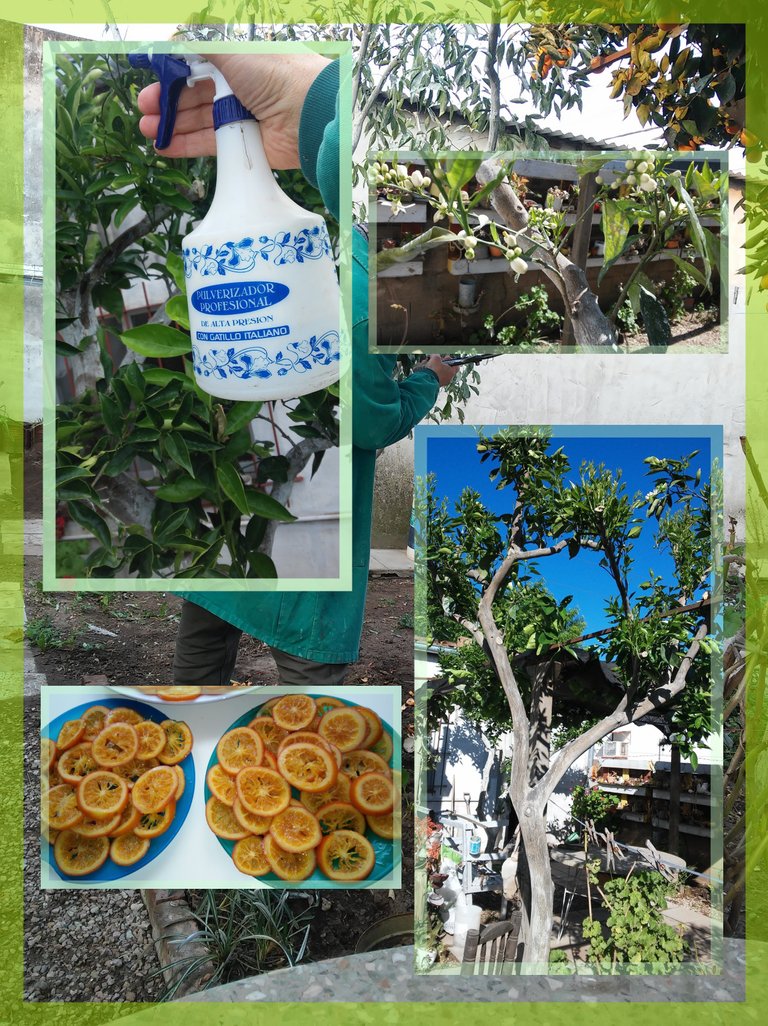
After such a radical pruning (https://hive.blog/hive-140635/@goisal/curing-the-fruit-plants-in) as the one I was forced to do with the two orange plants and one mandarin, there is always the doubt whether the plants will be able to recover and return to their usual rhythm of development. Luckily I did the pruning in the middle of winter, when the sap of the plants is at the bottom, very close to the roots, and the plants - therefore - suffer very little when the branches are cut.
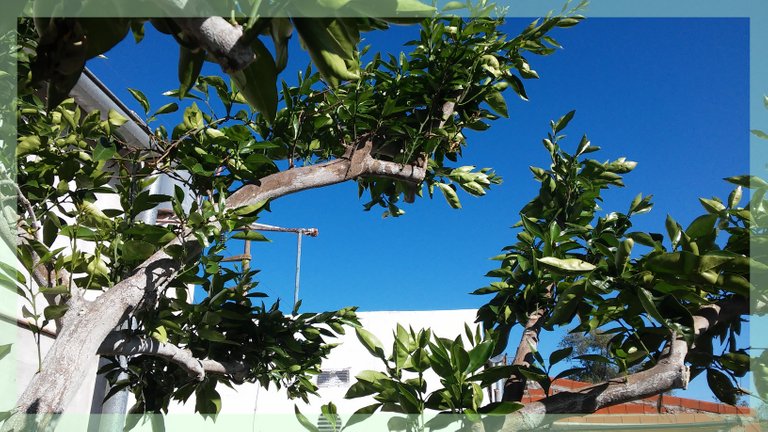
I had already told you about this work in this post explaining it in detail and showing you the bare trunks and a few branches with leaves that I had left so that the plant could continue to breathe normally. This is essential because the plant absorbs most of its oxygen through the leaves. I cleaned them as much as I could of the pest called "cochinilla blanca o algodonosa" and the ones that were not badly attacked I left them after cleaning them meticulously one by one with potassium soap and neem oil.
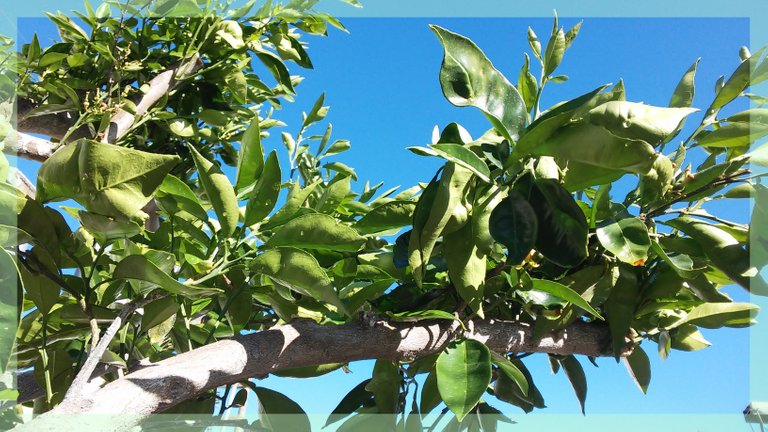
Obviously to wait for the results I had to wait until the end of the winter and the spring started to make the plants feel all the power that the lymph, the sap, starts to rise up the trunk and run through all the branches. It is a real explosion of buds, shoots and flowers that accompany the growth of the branches during the first month of spring. And there I could see the first results that you can see in the photos.
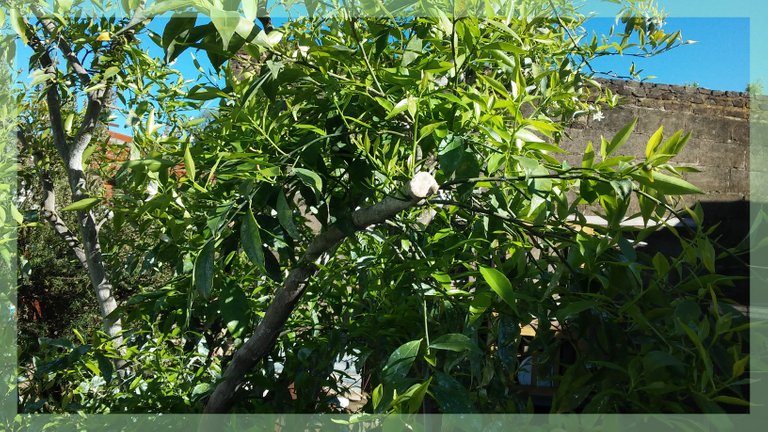
Note in this close-up the treatment carried out on the main trunk: in this case with a brush and by hand I have "painted" it in its entirety, several times, with copper sulphate diluted in water. It is a natural fungicide of general use that has excellent functions to eliminate the fungi that cover the trunks. It is a real all-purpose "cleaner" that eliminates fungi, bacteria and other parasites and pests that prevent the trunk and the main branches from breathing freely through their pores.
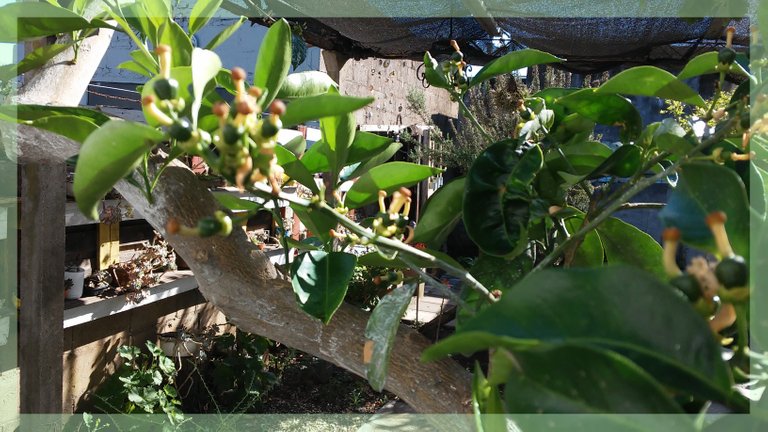
This work was done towards the end of winter and in the following photo you can see the condition of the trunk before the copper sulphate was applied. This treatment should be done at least once a month during the whole winter if possible and especially after the fruits have been harvested. It must be borne in mind that this variety of orange tree leaves me very little time to carry out these tasks. I have barely finished picking the ripe oranges and in less than a month the first spring flowers start to appear.
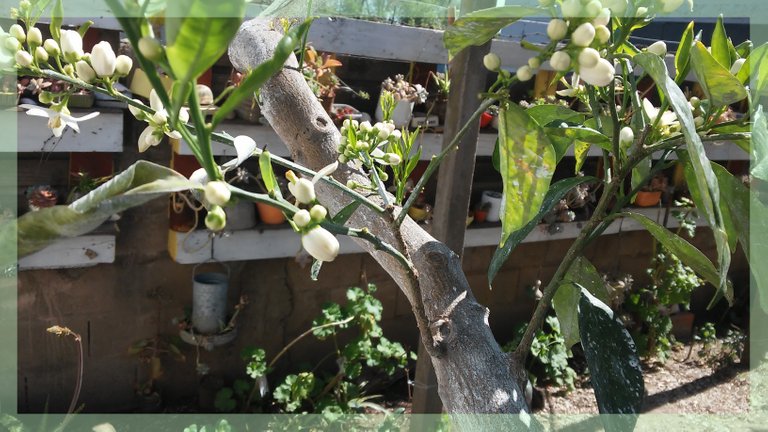
During this short period of time (between harvesting and flowering) we have to pay a lot of attention to the fruit trees, because in this short period we have to do as much maintenance work as possible on the fruit trees. We must then wait until the blossom has closed and the first fruits have been pollinated before continuing with the care of the fruit trees. For two reasons: a) Because the flowers are very sensitive and as soon as we touch them they fall off. One flower less is one fruit less, the account is very simple. b) Because if we apply any fungicide on the trunk and the leaves and this reaches the flower it eliminates the power of pollination, scares away the insects, especially bees, which carry out this function, and all the previous work is ruined.
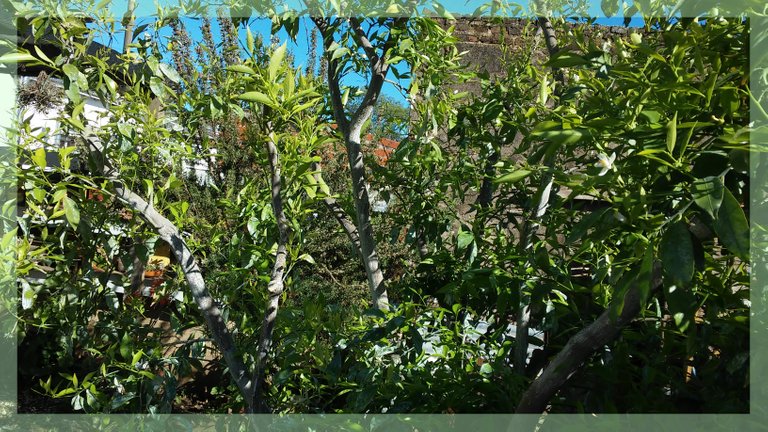
This year, in order to be able to work with more time, I had to pick several oranges that were not completely ripe, as I was not going to have enough time to do a thorough job of pruning and spraying the three plants. However, my wife, an excellent cook, found an excellent way to use the harvested oranges as they ripened in specially prepared boxes.
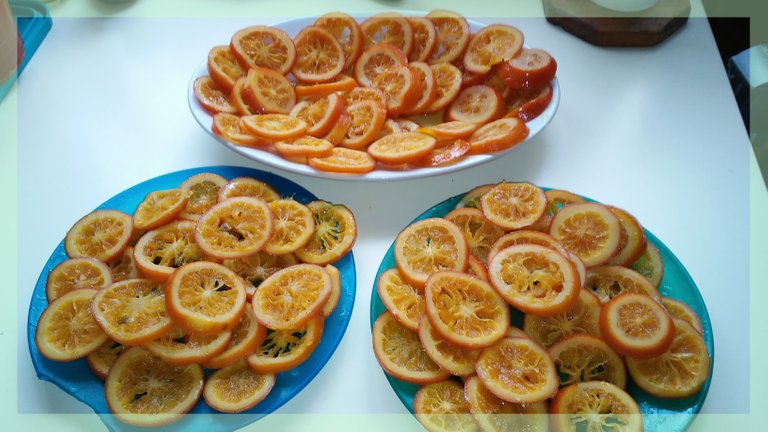
She would cut the oranges into rounds or slices and then caramelise them, first by boiling them a little and then applying the diluted syrup that the oranges had produced. All natural and authentically organic. Then they can be kept in the fridge or freezer and eaten cold as a real dessert. Obviously the most important thing in this case is that the peel is organic, i.e. not affected by chemical spraying. Of course, this is not possible with oranges bought in the shops (you can, but you shouldn't, which is different). They are really delicious and leave a genuine taste of oranges in the mouth.
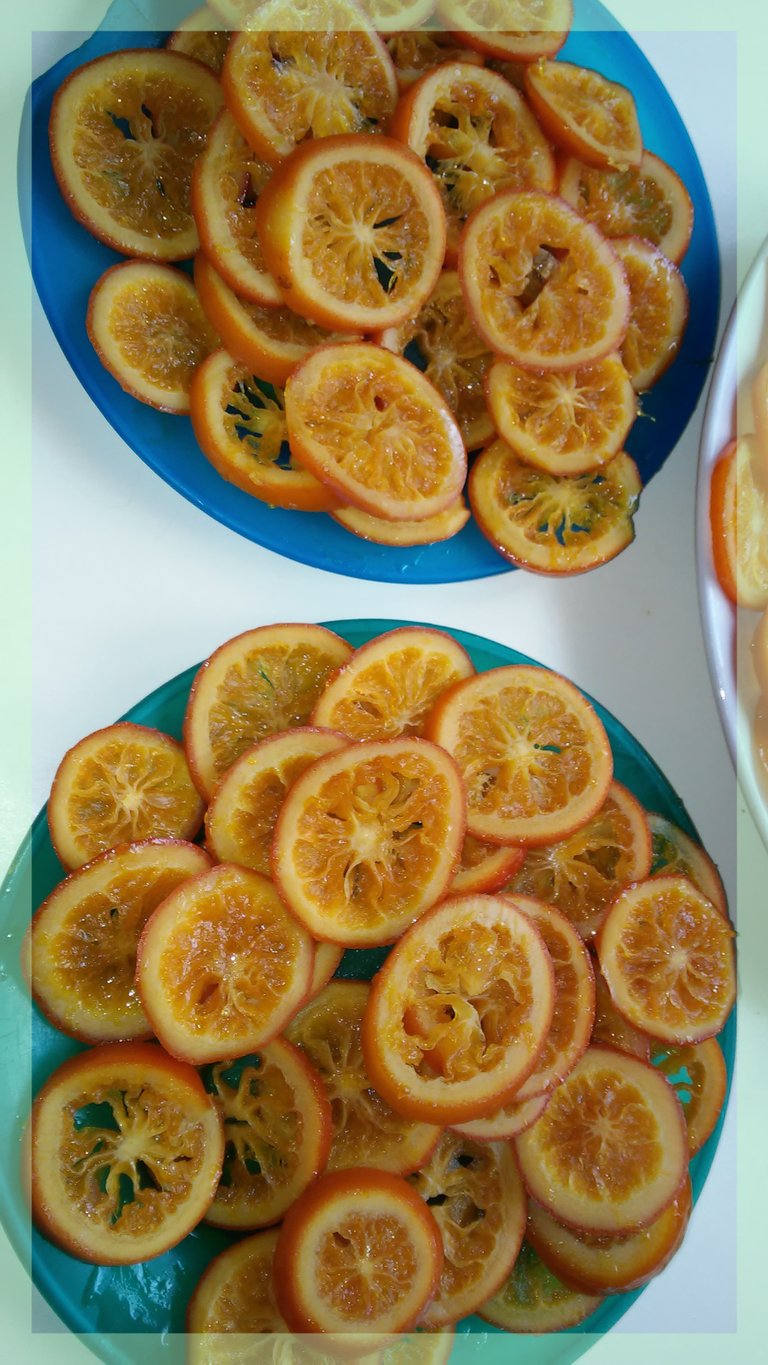
Going back to the pruning we can see how after the crucial period new branches and leaves start to appear. In this photo the trunk is already losing part of the previous application of copper sulphate diluted with quicklime or white lime and water (I had forgotten this detail in the initial paragraphs). But we can clearly see the cleanliness of the trunk, without parasites or pests. In any case for safety it is better to keep applying new coats until the flowers start to appear.
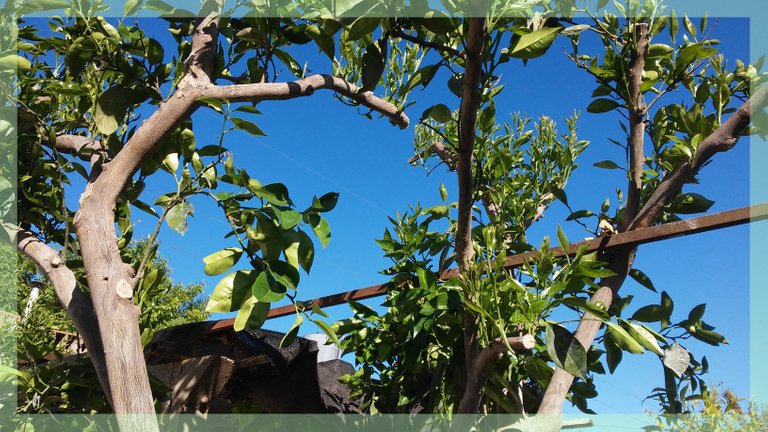
A close-up of the orange plant in all its splendour in the middle of spring. Stripped of many of its leaves and branches compared to the previous year but totally healthy. The mere fact of not seeing huge numbers of tiny ants climbing up the trunk every day to feed on the white cochineal is a great relief. I know that this year the production, in quantity, is going to be lower, but in quality it will surely be much higher.

And next year I will have a fully developed and healthy plant again. With a surely more abundant production (if the weather conditions allow it, especially the rain in spring) and a constant quality that translates into healthy and rich fruit. With the fruit that does not ripen well or is not as rich as the others, we make jam. This year we have made more than twenty jars of jam. The problem is not making the jam but getting the empty jars.
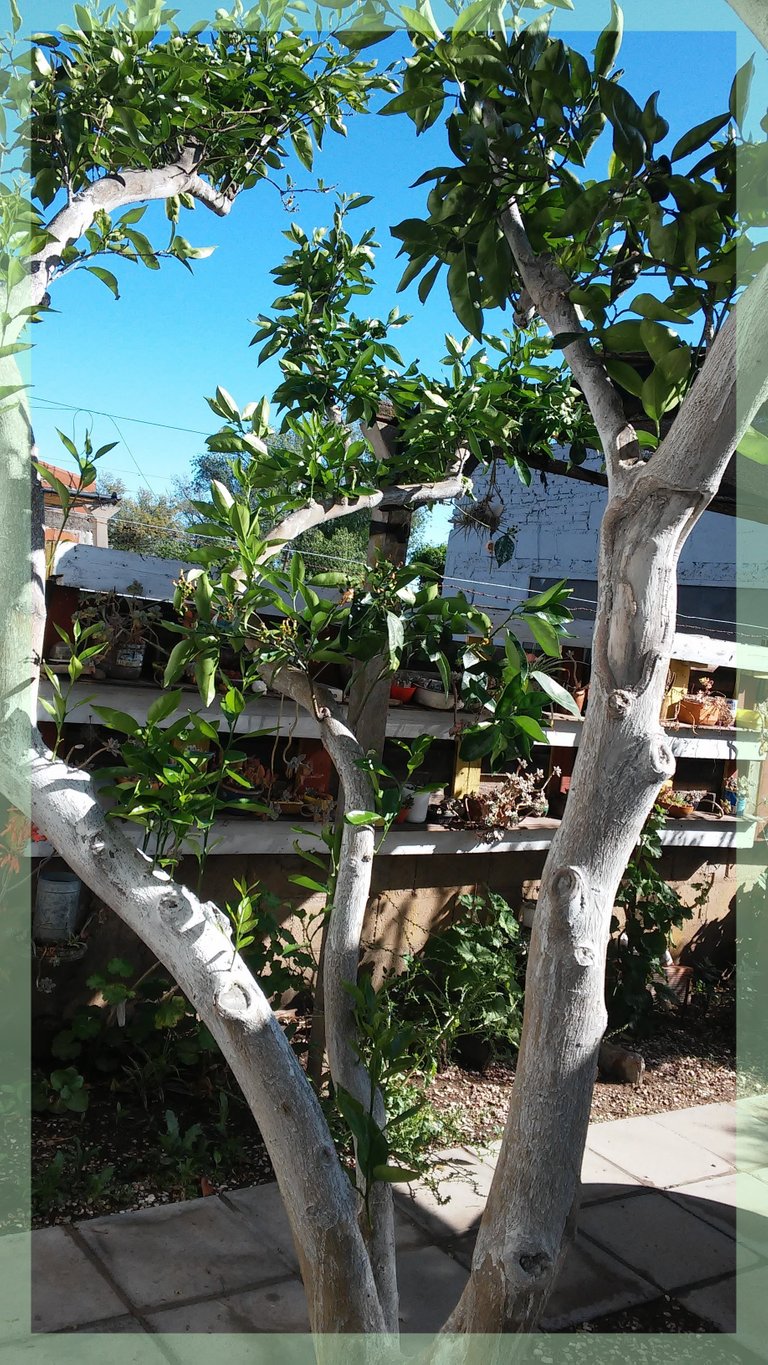
See the constant work spraying branch by branch with my one litre hand sprayer. Ideally I would like to have a spraying machine but as the amount of fruit trees is very small I have no problem using this domestic sprayer which so far has given me excellent results. First I prepare a 20 litre container with the dosage of potassium soap and neem oil (it varies whether it is to combat the pests or simply to control them) so that the spraying is homogeneous. Then I get on the ladder and the fun begins!
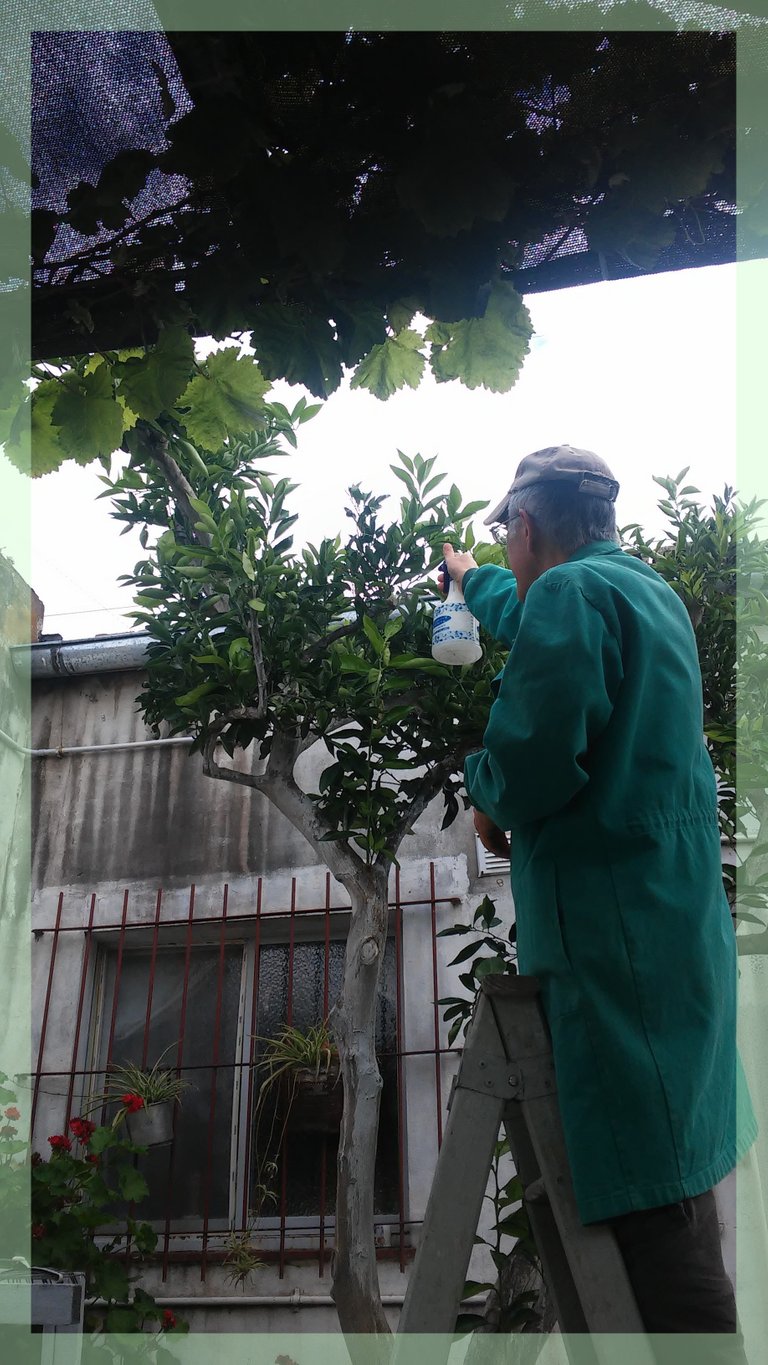
It is advisable to wear a mask (sometimes I forget) especially when the wind blows in your face. On these days it is definitely better not to fumigate. But even with little air "against the wind" there is still a risk that the solution will hit our face. It does not cause any apparent harm, as potassium soap and neem oil are harmless to human health. But prevention is always better than cure.
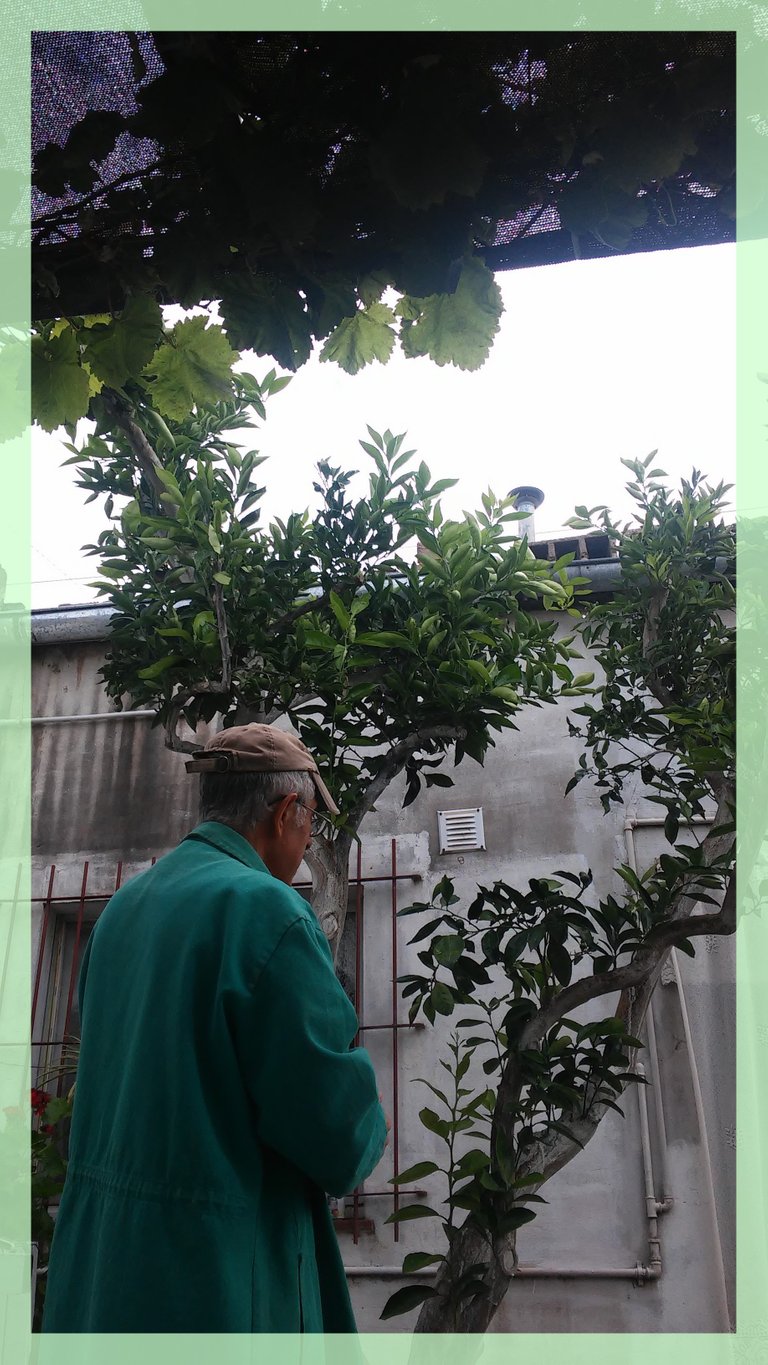
To prevent the solution from spreading uselessly, it is advisable to bring the sprayer about 15-20 cm from the branches, trunks or leaves to be sprayed. In this way, spraying will be 100x100% effective and dispersion will be practically nil. The oil serves to keep the leaf "oiled" and moist for a longer period of time, making the effect of the fumigation last longer.
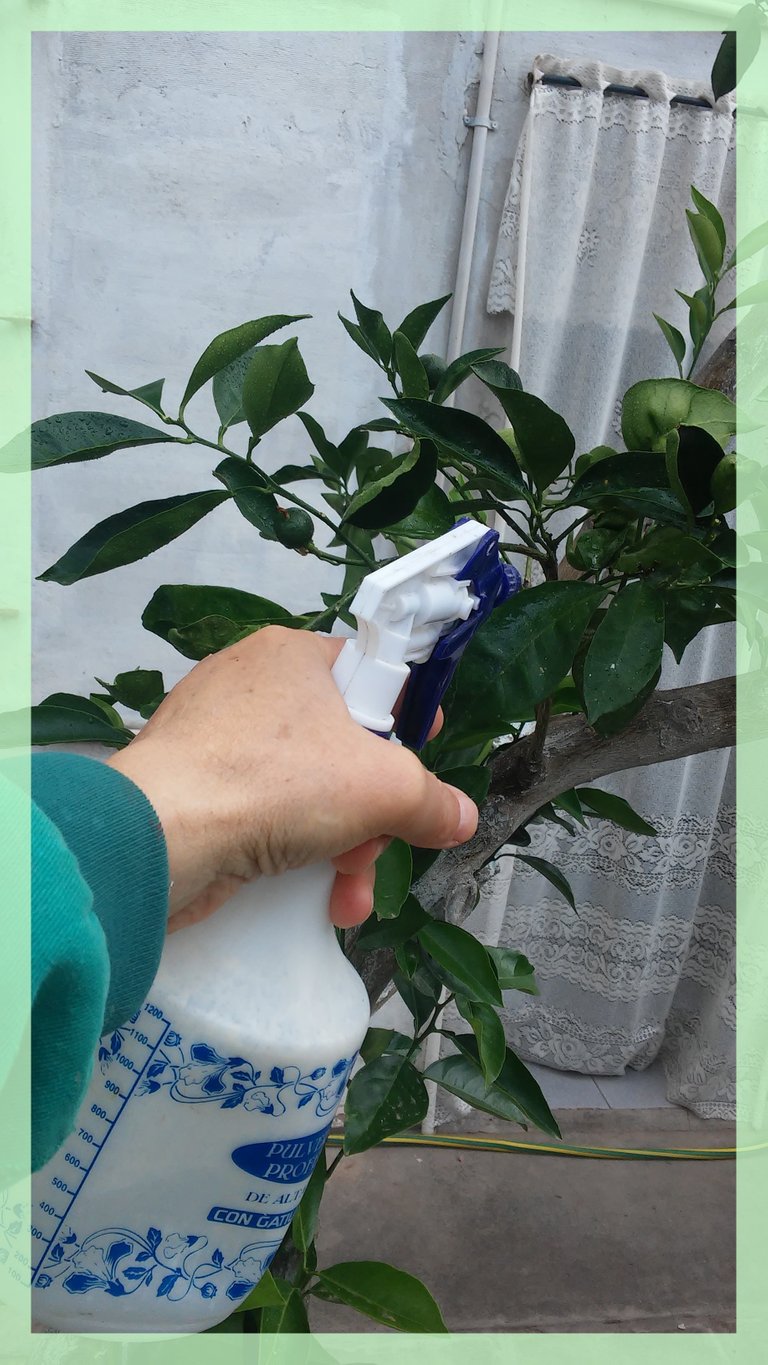
Another factor to take into account is the spraying of the leaves, especially on the inner side (the underside). Yes, I know what you are going to tell me: that it is very difficult. It is true, you have to be patient, place the sprayer under the branch with the mouth upwards and spray the concave part of the leaves well because that is where the pests are stored, especially the white mealybug, as it suffers a lot from the effect of the sun.
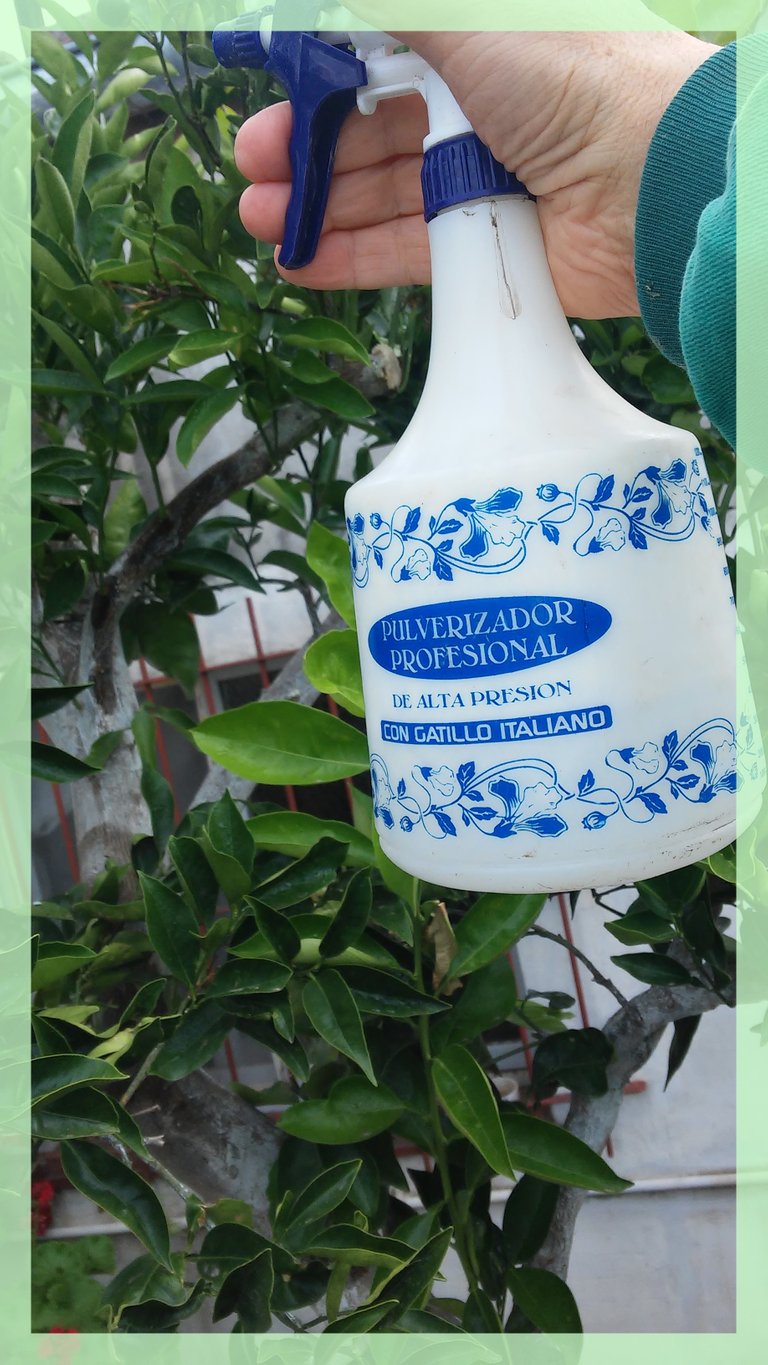
And with this I say goodbye friends of @HiveGarden leaving for the last photo, as a postcard, the first oranges that already begin to take shape. The growing and ripening process will be slower now and in 120-150 days they will be ready for consumption.
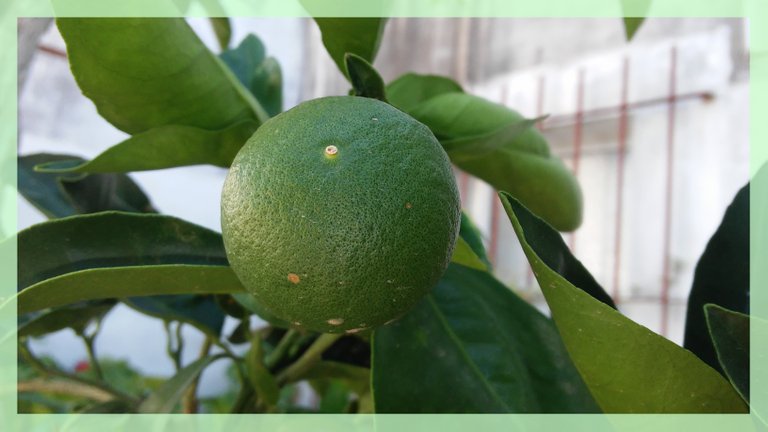
The rewards earned on this comment will go directly to the people( @aplusd ) sharing the post on Twitter as long as they are registered with @poshtoken. Sign up at https://hiveposh.com.
Thanks!!
Dear @goisal,
Your support for the current HiveBuzz proposal (#199) is much appreciated but it will expire end of December!
May we ask you to review the new proposal (#248) and renew your support so that our team can continue their work next years?
You can support the new proposal on Peakd, Ecency, or using HiveSigner.
https://peakd.com/proposals/248
We wish you a Happy New Year!
Done @hivebuzz, I support both initiatives. The best for the team in this new year.
Thank you for your support @goisal, much appreciated! 🤗